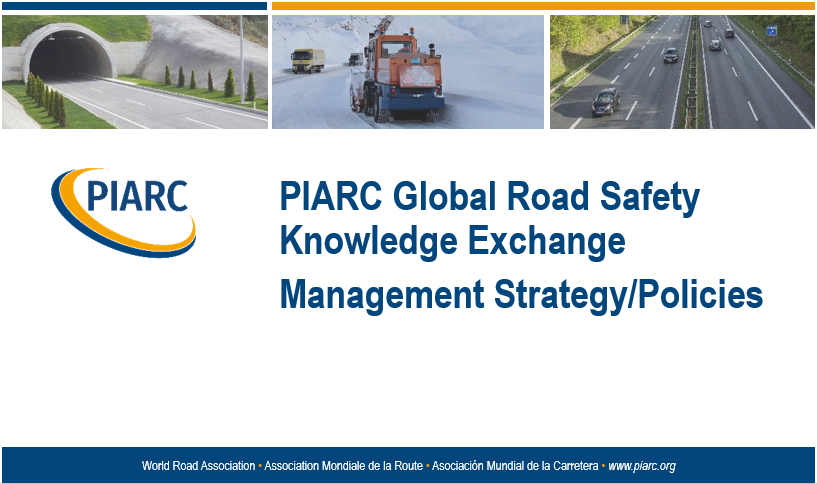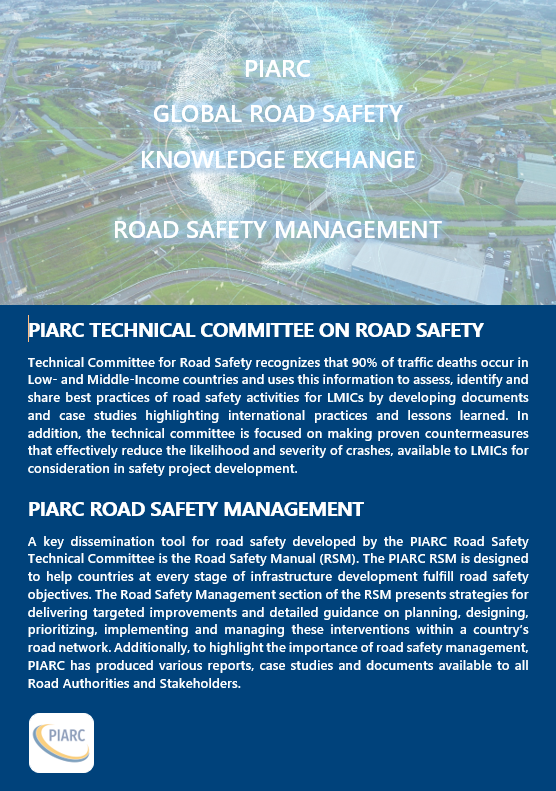PIARC is boosting Road Safety in LMICs: focus on management!
Published on 7 December 2023.
PIARC Global Road Safety Knowledge Exchange.
Samantha Cockfield presents the management system for road safety. Watch now!
Head of Road Safety at the Transport Accident Commission
Let’s pursue our Road Safety Knowledge Exchange! This global project aims at sharing knowledge about road safety, especially with low- and middle-income countries but also with more developed economies with different needs and priorities. Since January 2023, the Road Safety Knowledge project broached the questions of Vehicles, Speed, Data, Vulnerable Road Users (VRUs), Infrastructure and Tunnels to increase road safety.
This month, let’s focus on management!
PowerPoint Presentation

To come.
